You’ve most likely heard photographers talking about full frame vs cropped sensors. And not really paid much notice as it’s usually something that as a new photographer makes no sense.
Yet it’s important to know the difference to help you get the best quality images. And more importantly, choose the right lens.
If you haven’t read my post on what a sensor is, then make sure to brush up on that before reading on.
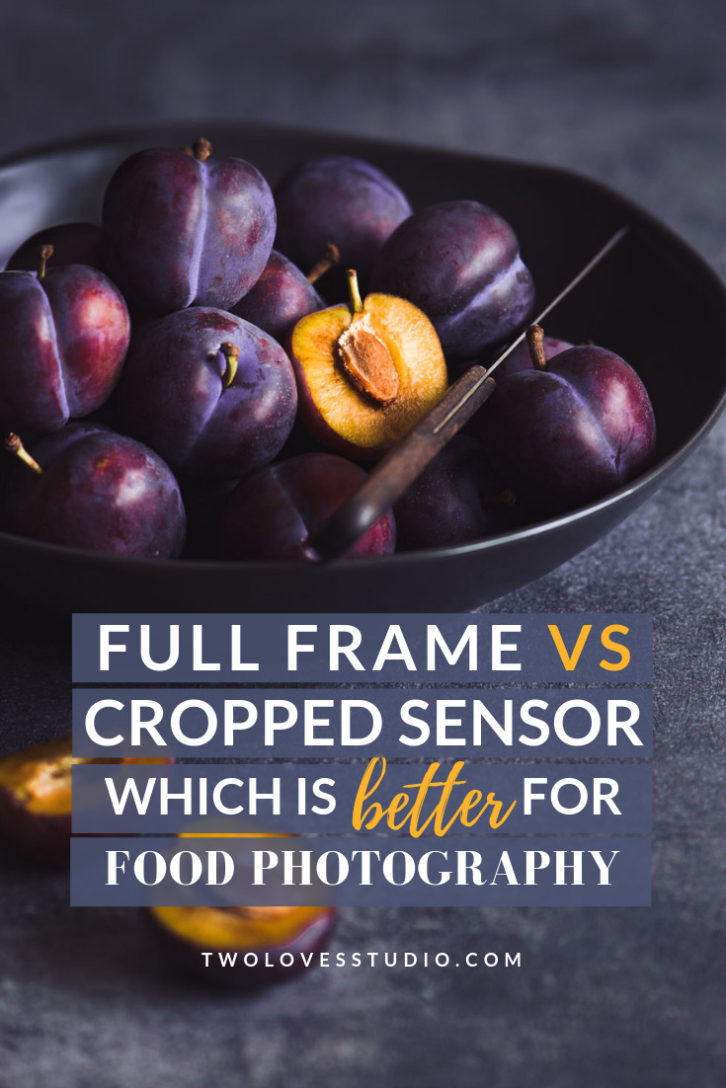
What is a Full Frame Camera?
A full frame camera sensor is the largest sensor you will find in a consumer camera. They are typically found in professional or ‘high-end’ cameras.
The sensor is equivalent in size to 35mm film, which is considered full frame.
After full frame sensors, the next largest are medium format sensors.
Due to the size of this large sensor, DSLR cameras that are full frame tend to be more expensive, heavier and larger. With the exception of full frame mirrorless.
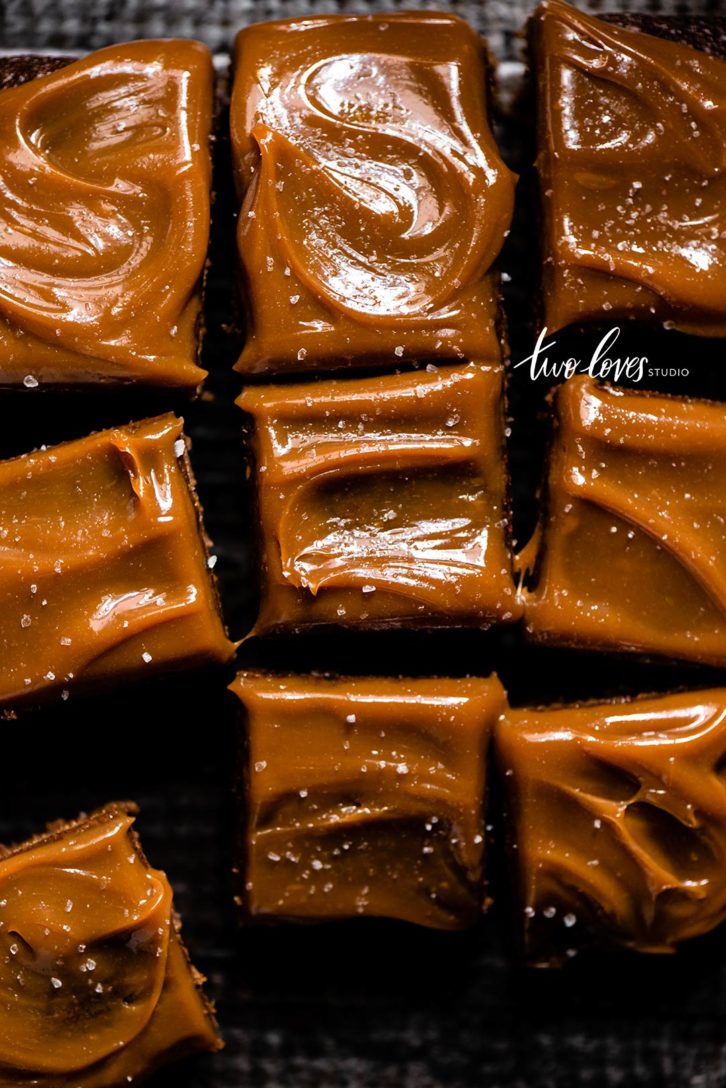
What is a Cropped Sensor?
A cropped sensor is essentially a smaller sensor and gets its name from what is known as the ‘crop factor’.
There are different ‘crop factors’ in cropped sensor cameras.
It means that if you are shooting the same scene as someone who has a full frame, your image is going to be ‘cropped’.
You’ll be able to fit less in the frame at the same distance. Let’s see this visually.
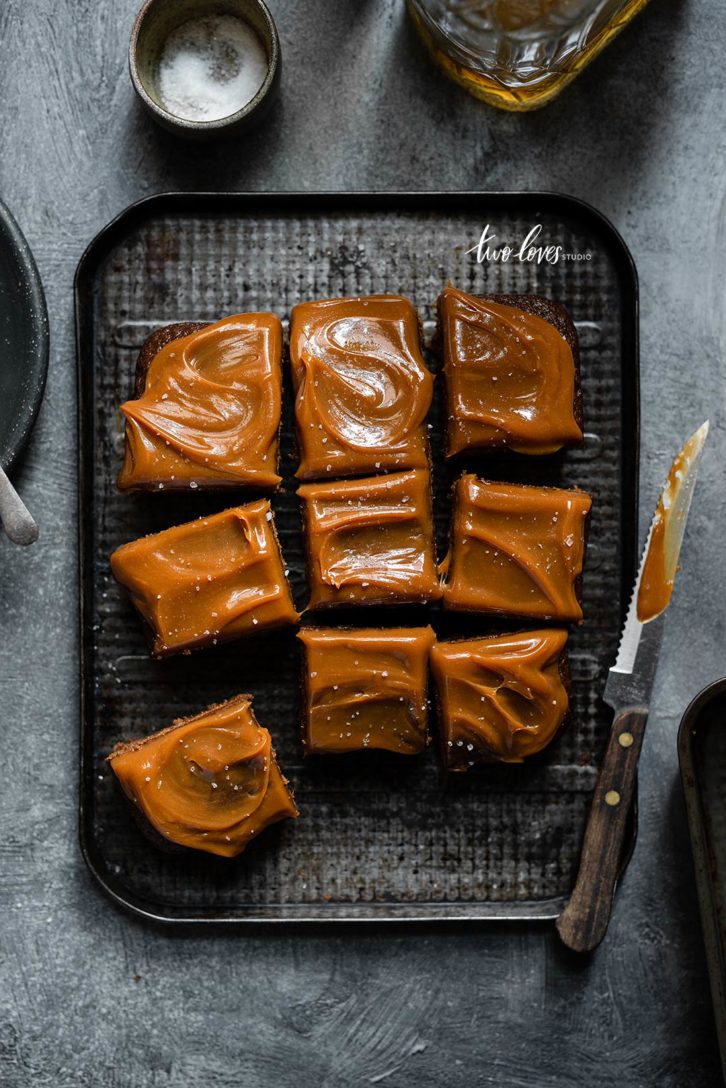
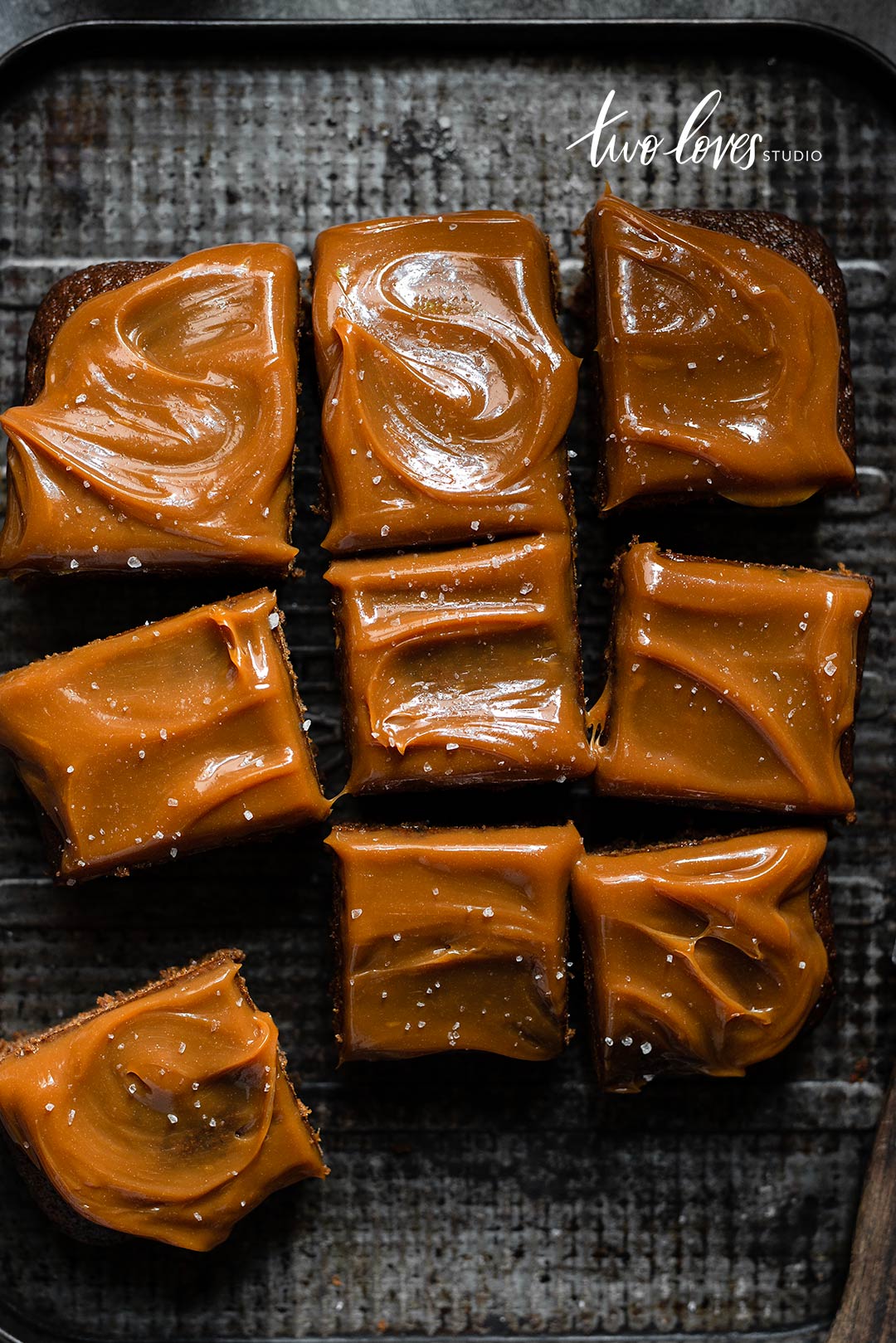
Why Do We Have Different Sensors?
The main reason that we have different size sensors is down to cost.
Full frame sensors are more expensive and improve image quality. In order to provide consumers with better options for price, manufacturers opt for smaller sensors.
In niches outside of photography, cropped sensors can come in handy to create even more ‘zoom’.
Think about it.
If your camera is more ‘cropped’ or takes a shot closer to your subject than a full frame, this would benefit some photographers.
My dad is a wildlife photographer. So he has a cropped sensor camera that helps him ‘get closer’ to an animal than a full frame would, (assuming we had the same lens on).
Not so useful for food, but you get the idea.
Full Frame or Cropped Sensor: Which is Better?
Photography isn’t usually so simple that you can just say one type of camera is better than the other.
All makes and models had different uses, are made for different things and will depend on what your subject is.
However, it’s generally considered that a full frame is better than a cropped sensor. Going back to what a sensor is, it’s the most important part of our camera that captures the information for our image.
So if this important part is larger, then image quality is generally better.
But a great image doesn’t stop at just sensor type.
Here are two images that I shot with a full frame and a cropped sensor. (With different lenses with a change in distance to get the same focal length/perspective).
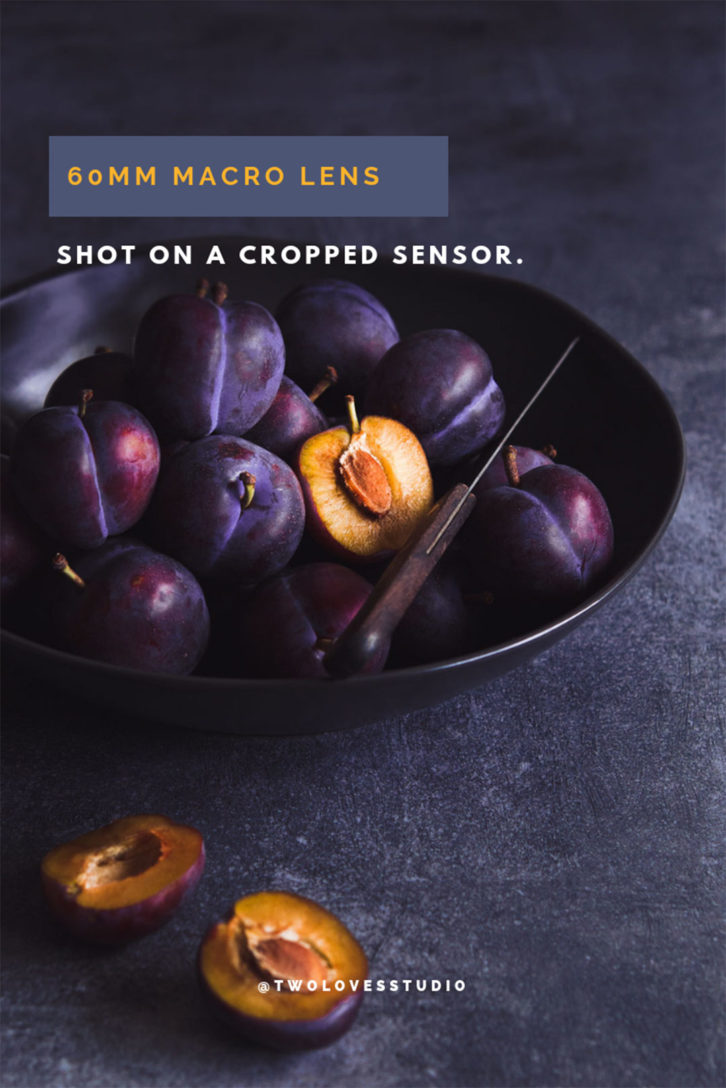
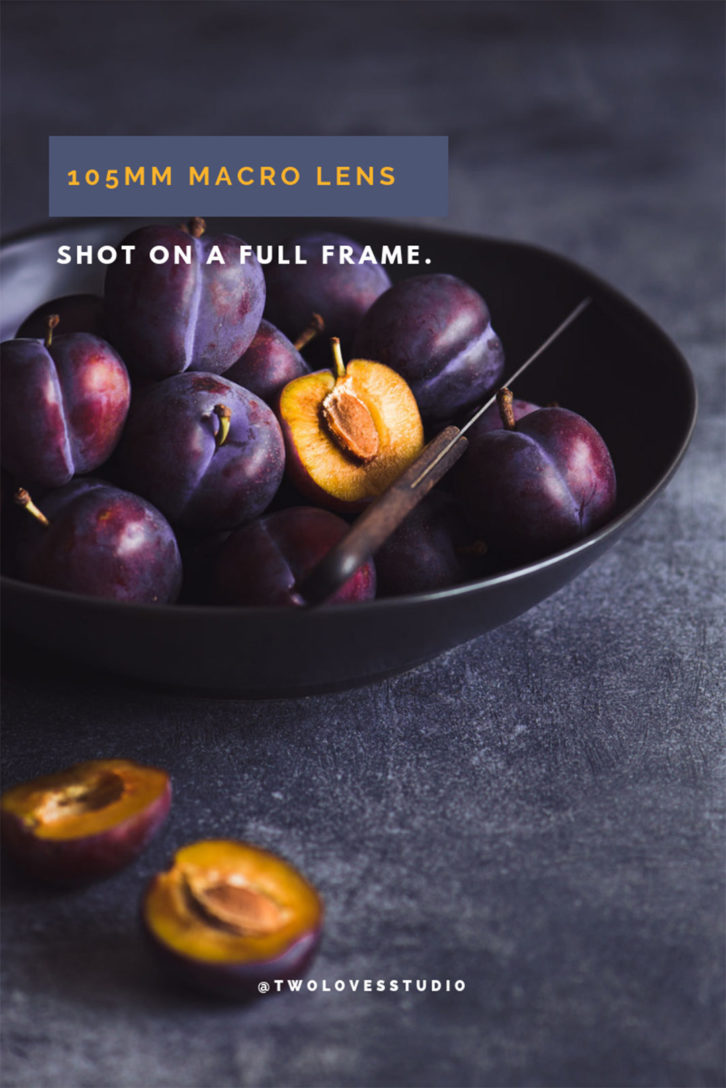
As you can see they both look really great.
As a new food photographer, the best one is the one you can afford. Look after your camera and you can get a good return on it when you want to upgrade.
How Do Sensors Affect Focal Length?
So here is the meat and potatoes. Aka, what you need to know about cropped sensors and full frames.
Remember how I said that cropped sensors would ‘crop’ an image in comparison to a full frame?
Well, let’s just say that you are next to a friend who has a full frame. You’re both shooting the same scene. (So you’re at the same distance).
You both have a 50mm lens on.
This is what your friend sees through their lens. And this is what you will see.
See how your image is cropped? Or you can fit less in the frame?
That’s how sensors affect focal length.
Even though you both had a 50mm lens on, your lens is shooting like a 75mm. So you are not able to fit as much in the frame.
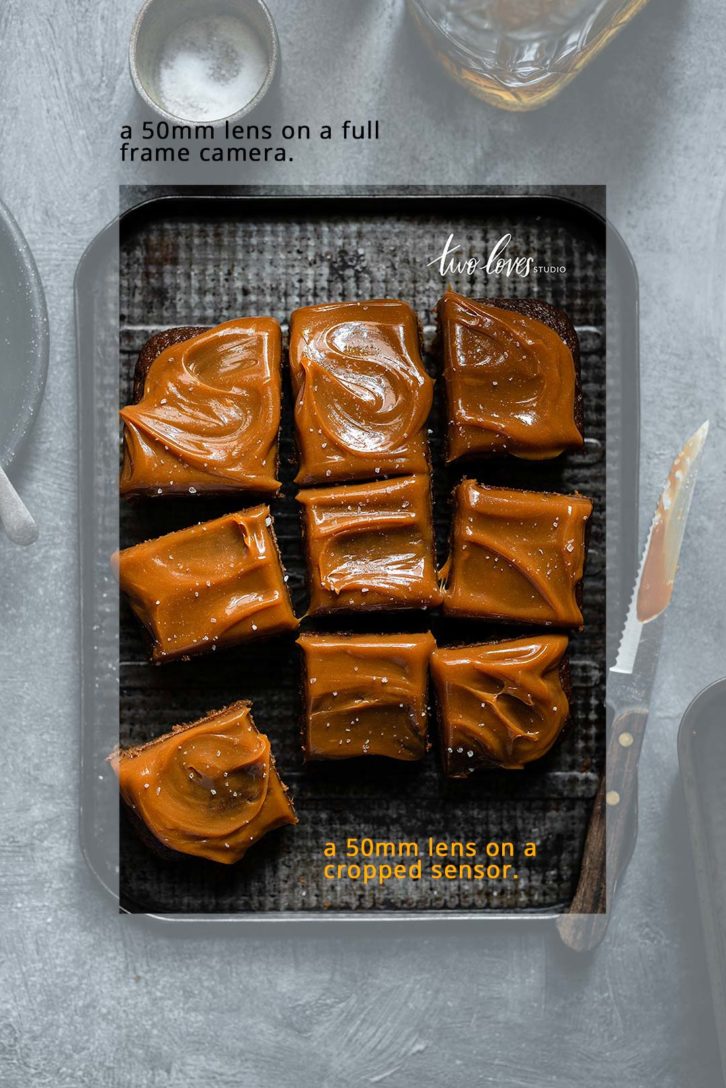
It Affects Your Lens Choice
The type of sensor that you have will affect your lenses focal length.
And that’s due to the fact that in cropped sensor cameras, you have a smaller sensor.
So any lens that you buy and use on a cropped sensor will have a ‘tighter’ focal length.
Most of the time when a photographer is recommending a lens, they are talking about the lens in terms of its true focal length.
Therefore if you have a cropped sensor lens, you will need to work backwards to determine what lens matches the focal length on a full frame.
But let’s do a quick breakdown.
So shooting a 50mm on a full frame camera, the 50mm will have a focal length of 50mm. Perfect.

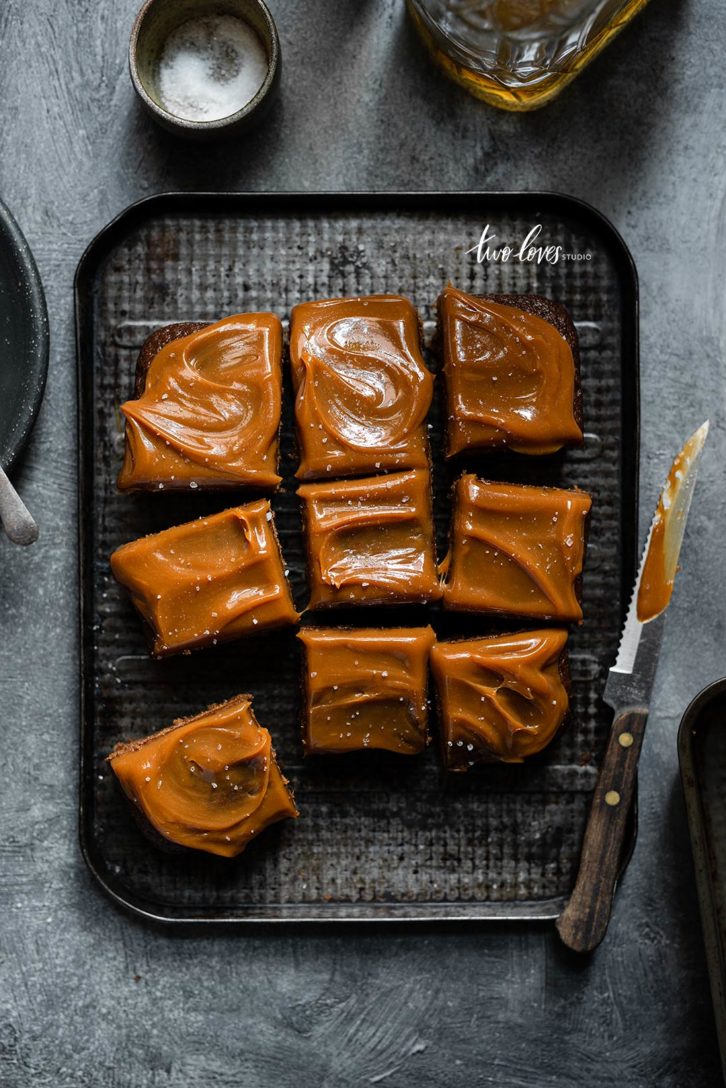
However, the 50mm on a Canon cropped sensor camera will have a focal length of approx 81mm. So you will get less in the shot.
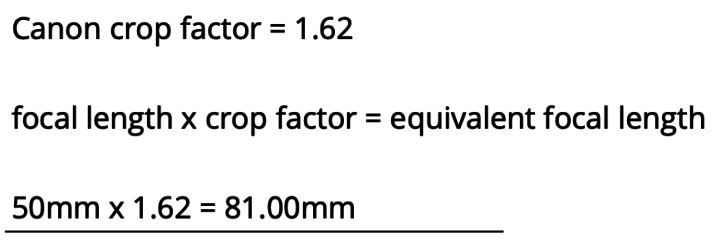
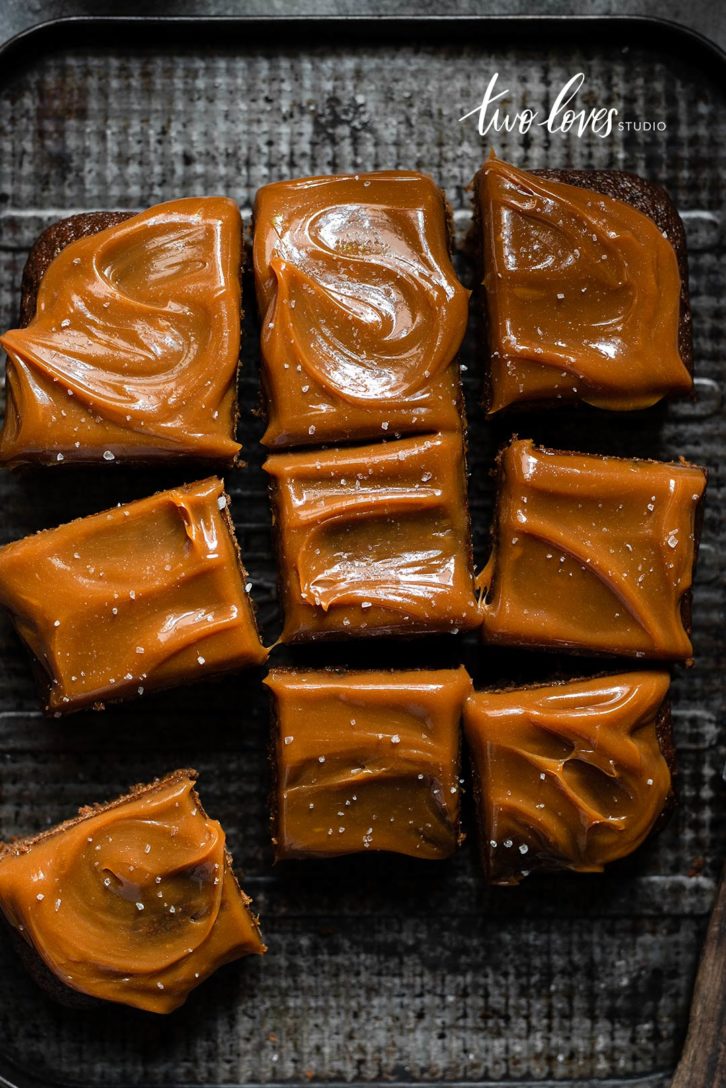
Now, what if I said to you, you need a 50mm for flatlays in food photography and you had a cropped sensor camera?
Can you see from the above shot that a 50mm would be too tight to capture the entire scene? Exactly.
So, you’d want a 35mm. A 35mm on a cropped sensor camera will have a focal length of approx 50mm.

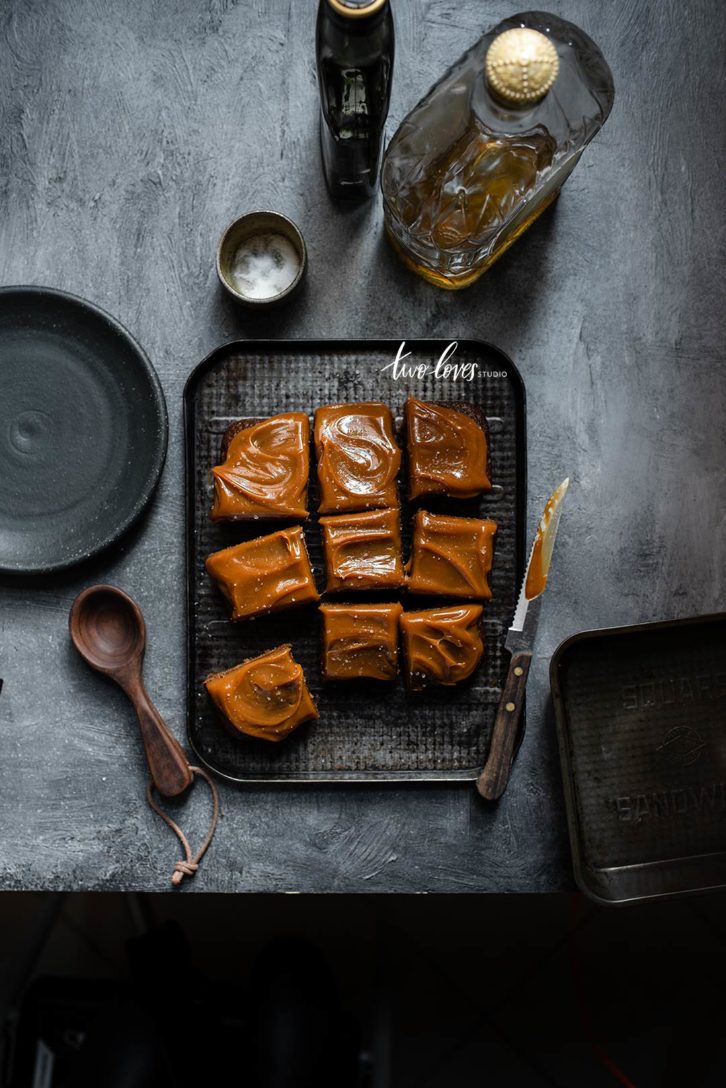
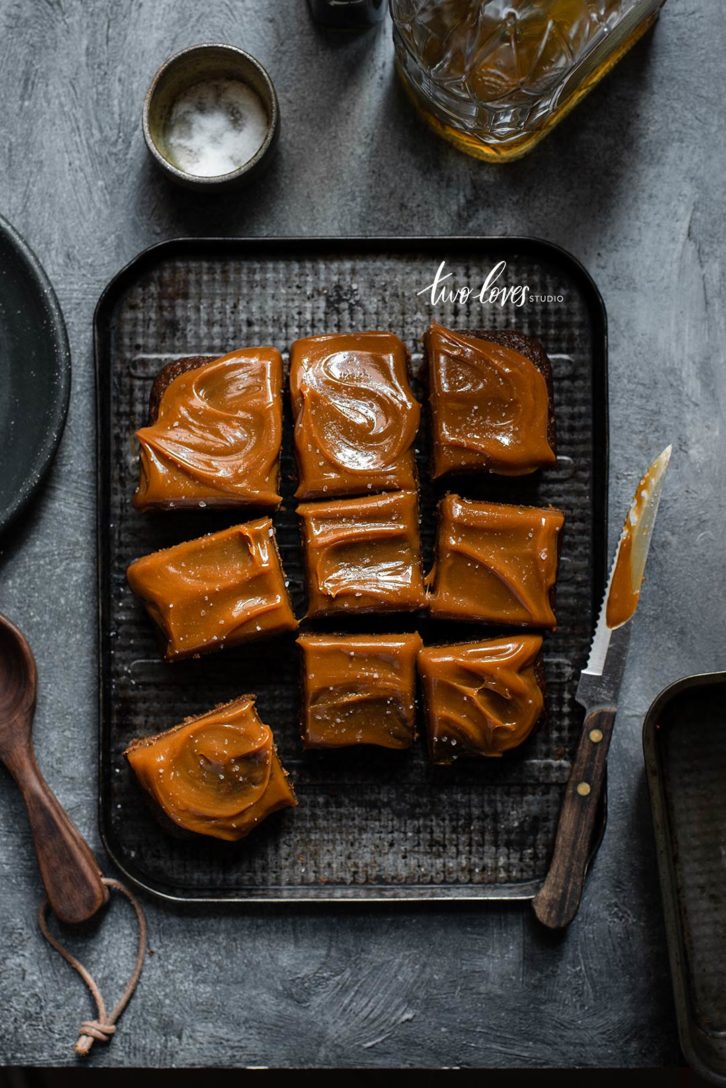
Don’t worry if that didn’t make sense yet as to how I worked that out. I’ll cover that in the next section.
Let’s do one more.
Say I told you that you needed a 100m macro (105mm) for those nice 45-degree shots in food photography. A 100m (105mm) on a full frame is 100mm (105mm). Remember, there is no cropped factor.
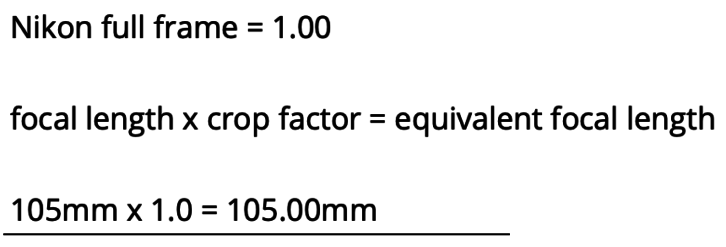
However, the 100mm (105mm) on a cropped sensor camera will have a focal length of 150mm (155mm). Which again is tight!
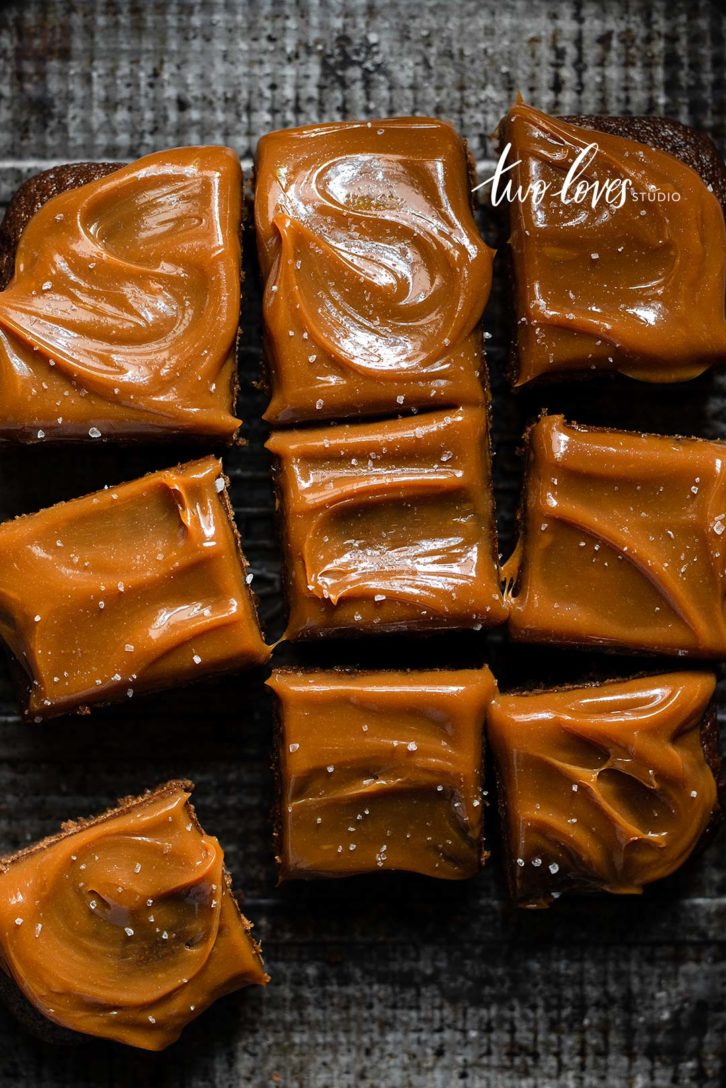
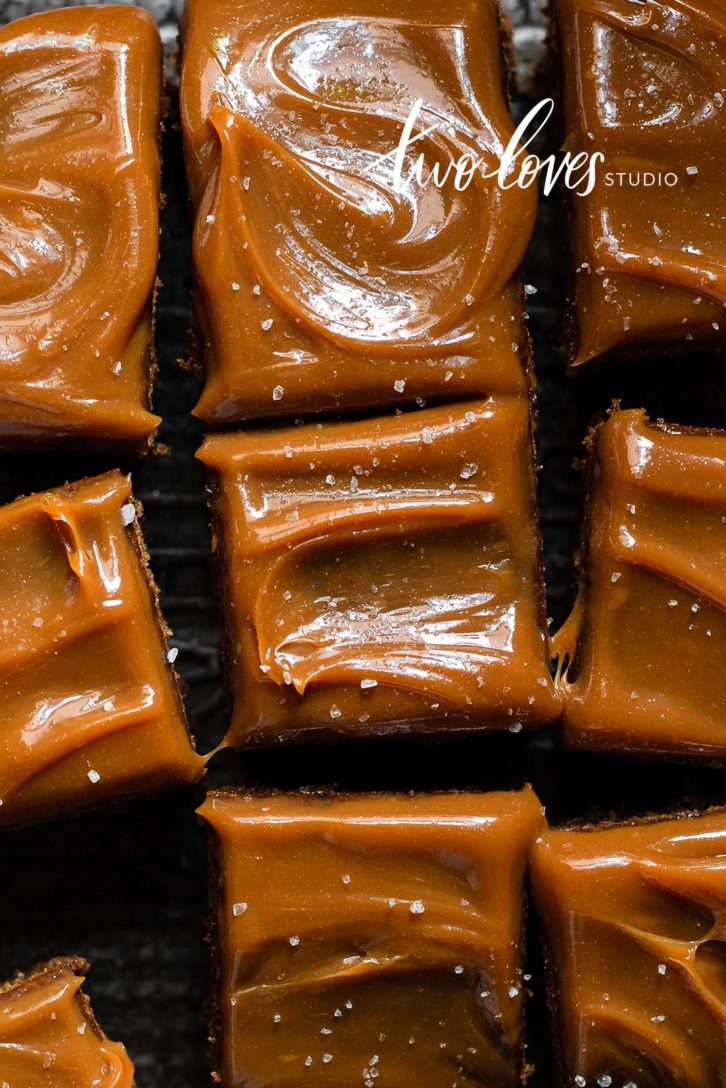

So in order to get a focal length of 100mm macro (105mm) on a cropped sensor, you will need a 60mm macro. A 60mm macro on a cropped sensor will have a focal length of 90mm.
Which isn’t quite 100mm (105mm), but it’s pretty close.
How to Work Out the Crop Factor
Each brand of camera has a different crop factor for their sensors. At the time of writing, Nikon, Pentax and Sony have a crop factor of 1.50. Canon has a crop factor of 1.62 and Sigma has a crop factor of 1.73.
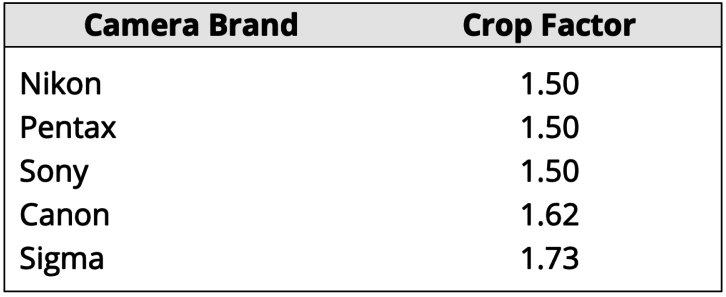
So to work out the crop factor you simply use this equation:
Lens focal length x crop factor.
Now it might be hard to remember each camera’s crop factor, so let’s not get caught up in the nitty-gritty.
For the sake of ease and understanding, all you need to worry about is really a crop factor of 1.50.
Let’s do an example.
Let’s say we have a 35mm on a cropped sensor camera. The crop factor is 1.50.

So if we use a 35mm lens on a cropped sensor camera, our focal length will be more like a 50mm (as 52.50 was our result above).
Why the Heck Does This Matter?
As you can see, it will change which lenses you will want to buy.
The 100mm (105mm) macro is a great lens for shooting those 45-degree angles with that beautiful blur.
But if you have a crop sensor, you’ll be shooting more like a 150mm. Which is very tight.
If you have limited space to shoot in at home, then you’ll find yourself up against a wall trying to fit everything in.
The lenses that we choose have a lot to do with how an image looks. Having the right lens is really important in getting the look we want.
It helps a photographer find their style.
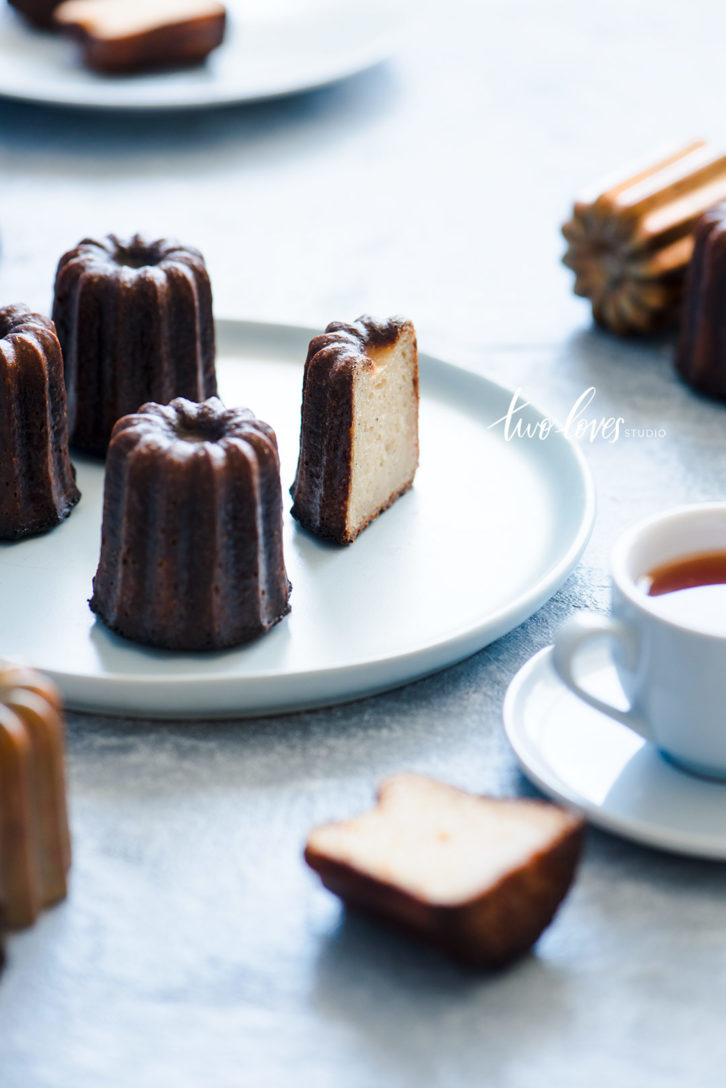
The Recap
Now, even if some of this information didn’t quite sink in, hopefully, the visuals helped you understand the concept.
So in a nutshell here are the takeaways from this post.
- Full frame cameras contain a full frame sensor.
- It’s the largest sensor size in a consumer camera, before medium format.
- Cropped sensors have a small sensor and are why these cameras are cheaper on price.
- Each brand of camera has its own crop factor. Nikon + Sony being 1.50 and Canon being 1.62.
- The sensor you have will affect the focal length of your lenses.
- The focal length on a cropped sensor with be ‘tighter’ and you will fit less in a frame.
- To determine the focal length on a cropped sensor, you multiply the focal length x cropped factor.
Lesson Activity
From the last activity, we discovered what type of sensor you have.
Based on that information, let’s determine what are the ‘two best focal lengths’ to shoot food with?
- If 50mm and 100mm are the two best focal lengths,
- What lenses do you need in order to get these focal lengths?
- If you shoot full frame that will = the focal length on the lens. No calculation necessary.
- If you shoot cropped sensor you will use this equation – focal length (divided by) crop factor 1.50.
(Note: I divided here instead of multiplied as we are working backwards to determine what the best lens to use is!)
If you’re taking Photography Fundamentals 101, click here for your next lesson.


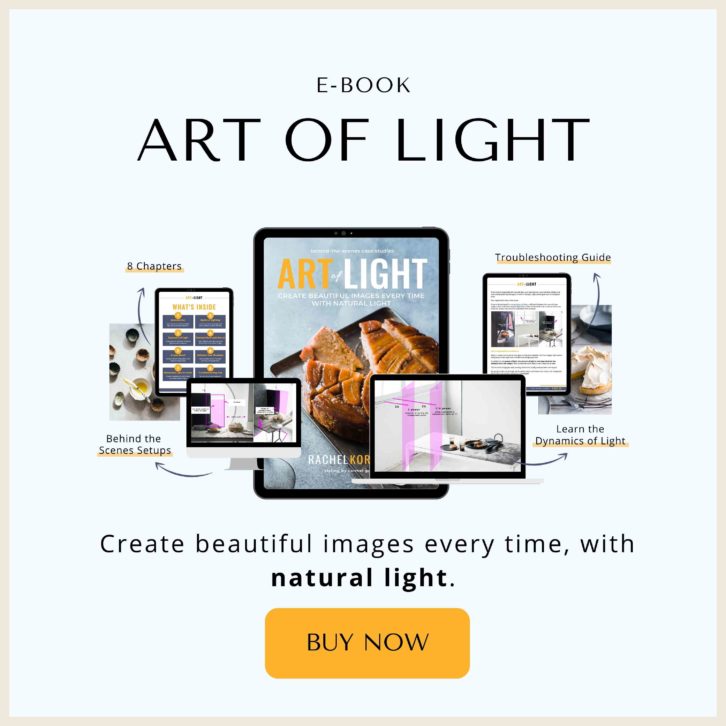


Carla
Great article Rachel! I have seen some time ago a comment from you on your Instagram recommending the 60mm macro for a cropped camera and it opened my mind. I always wanted a 35mm but I don’t know why I haven’t thought about the 60mm macro. Now both are on my wish list.
You explained and displayed very clearly the differences between the lenses/sensors.
Thank you!
Cheers,
Rachel
Hey Carla! That’s so great to hear 🙂 Yes the 60mm is a great option for cropped sensors. And is close to my favourite focal length ( the 85mm ).
Angélica
Thanks for the visuals! First time I understand this, wish I has know before buying my 50 mm lens.
Now I want to save for a 35 mm and a 60 mm. 🙂
Rachel
You’re so welcome Angelica! The visuals sure do help. I know what you mean. 50mm is a great focal length, but it’s totally different for a cropped sensor. It’s like needing to speak two languages. The 60mm I highly recommend for a cropped sensor.
Theresa
Thank you so much for posting this. Makes perfect sense now. When I first started out all I read was buy a nifty fifty but no one mentioned it’s really for a full frame and not a crop. Your examples are just what I needed to understand why I wasn’t able to get the shot I was hoping for in so many cases. Have a lovely day and now I’m going to search for a reasonably priced 35mm for my crop sensor.
Rachel
I am so glad to hear that Theresa! Knowing the difference between them is really key in knowing which lens to buy. So great that you can grasp this concept now 🙂
Raji
Thank you so much Rachel for this write up… on my goodness, this is so informative . I had to read it a few times, I won’t lie,but reading it a few times made it sink better and clearer… I have a Nikon cropped sensor and I now know I need a 35mm for flatlays and 60mm macro lense …
Thank you??????
Rachel Korinek
Hi Raji, I know it can take a while to understand some of these concepts. That’s correct! You can also read this post about focal lengths for cropped sensors: https://twolovesstudio.com/blog/focal-lengths-for-cropped-sensor/
Preya
Hello, thank you this is very helpful. Question I understand why I need the 35mm but is there a full name? I’m seeing 35mm macro can I use that?
Rachel Korinek
Hey Preya, happy to clarify :). Focal length and a specific lenses are different concepts. The reason this post doesn’t cover a specific name of a lens is that we’re just focusing on focual length. So now that you know that a 50mm is good for cropped sensor cameras, you have options of which one. I don’t recommend a 35mm macro for food, (as you’ll notice I recommend the 60mm macro instead). It depends on which camera brand you have, but a f/2.8 – f/1.8 lens will be suffice. Which camera brand do you have? xx 🙂
Kvn
I have a Nikond7500 DX format and I’ve ordered the 105mm micro… Mostly for my cocktails but I might do some hobbyist portrait shots as well. The deciding factor for me was the boken and vr on the 105. Reading this makes me wonder if I’ve made a mistake. Currently most of my cocktails are shot at 70mm focal length, but I have a lot of room to move back most of the time…
Rachel Korinek
Hey Kevin! I actually recommend using the 105mm a lot for food photography! You can see in this article the types of photos I recommend for this lens. It’s a must-have lens for food photographers in my opinion and I usually shoot my cocktails with this lens too. Hope that helps!
Marit
I have a question, I have a sony alpha a350, and just started with food photography, it is a crop camera, which lens do you recommend I have now a 3.5-5.6 / 18-70. I still find it difficult to see all the different things and what is or is not good for a camera. What camera specification do you generally recommend if someone is going to pick up a new one? : )
Rachel Korinek
Hi Marit!I have a post on the two lenses that I recommend for cropped sensors. You can read more on it here. But in short, I recommend the 35mm and 60mm macro for cropped sensors 🙂
Janine
Hi Rachel, thank you for all the great posts you’re sharing. I’m a beginner and still getting my head around all these. I have a question about straight-on angle what lens you would recommend to use? I have a D7500 and a 35mm. I’m thinking to get a 60mm macro for 45-degree angle but will these two lenses be a good start for me when I want to take: overhead, 45 degrees and straight on shots. Do I need a 3rd lens? thanks
Rachel Korinek
Hey Janine! I know there is a lot to learn isn’t there! It does come down to how much you want to have in the frame and your distance from the subject so you are removing distortion. You can still use a 60mm (on a cropped sensor) for straight-on shots. This would be around 90mm on a full frame and I use my 85 all the time for this. For a cropped sensor, I still recommend a 35mm and 60mm and you can use both for a straight-on shot. If you haven’t yet read my Ultimate Lens Guide, I recommend doing that here: https://twolovesstudio.com/blog/ultimate-guide-lenses-food-photography/ Hope that helps! x